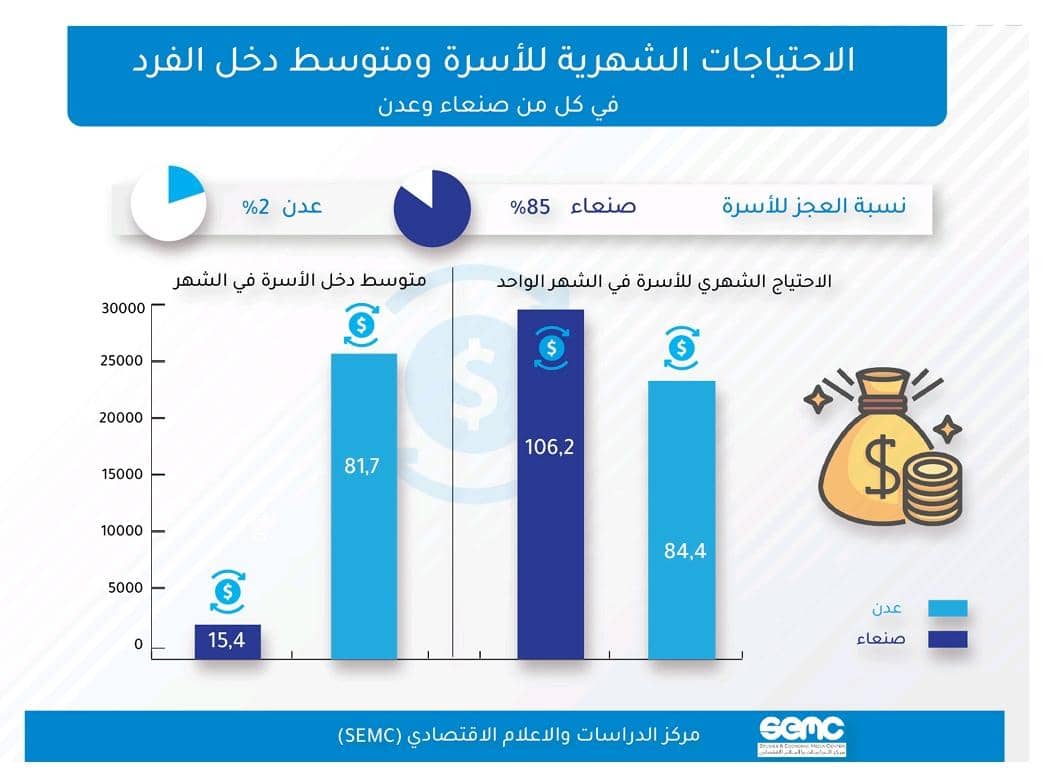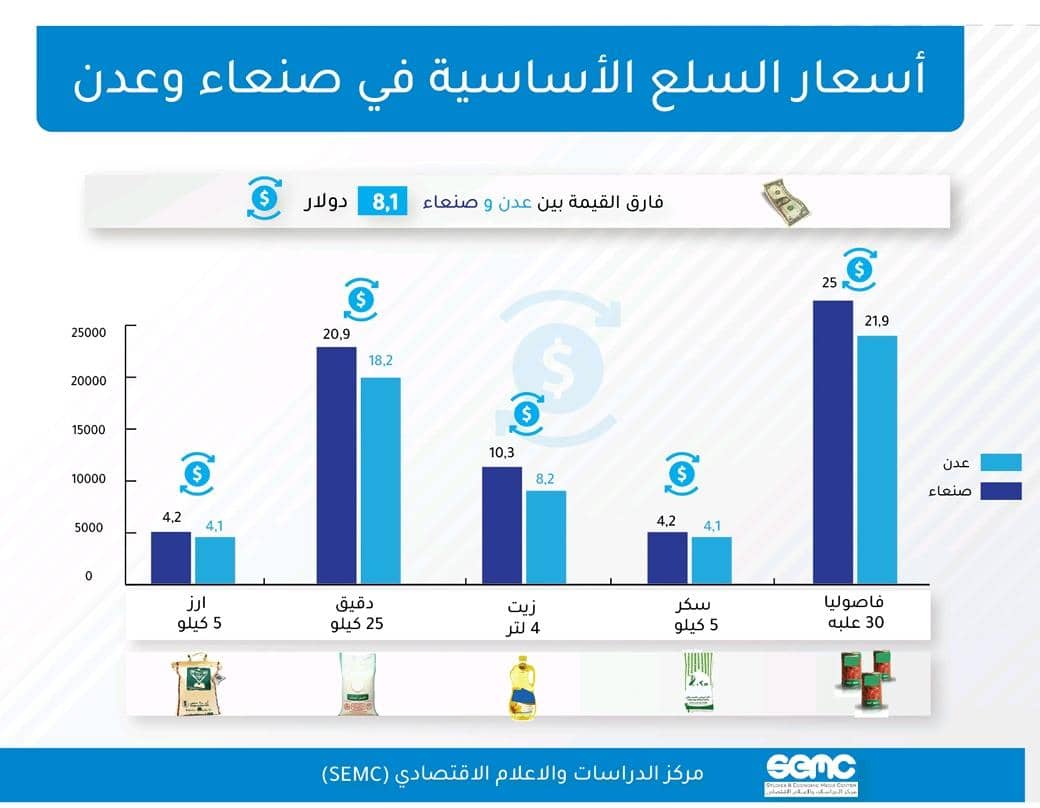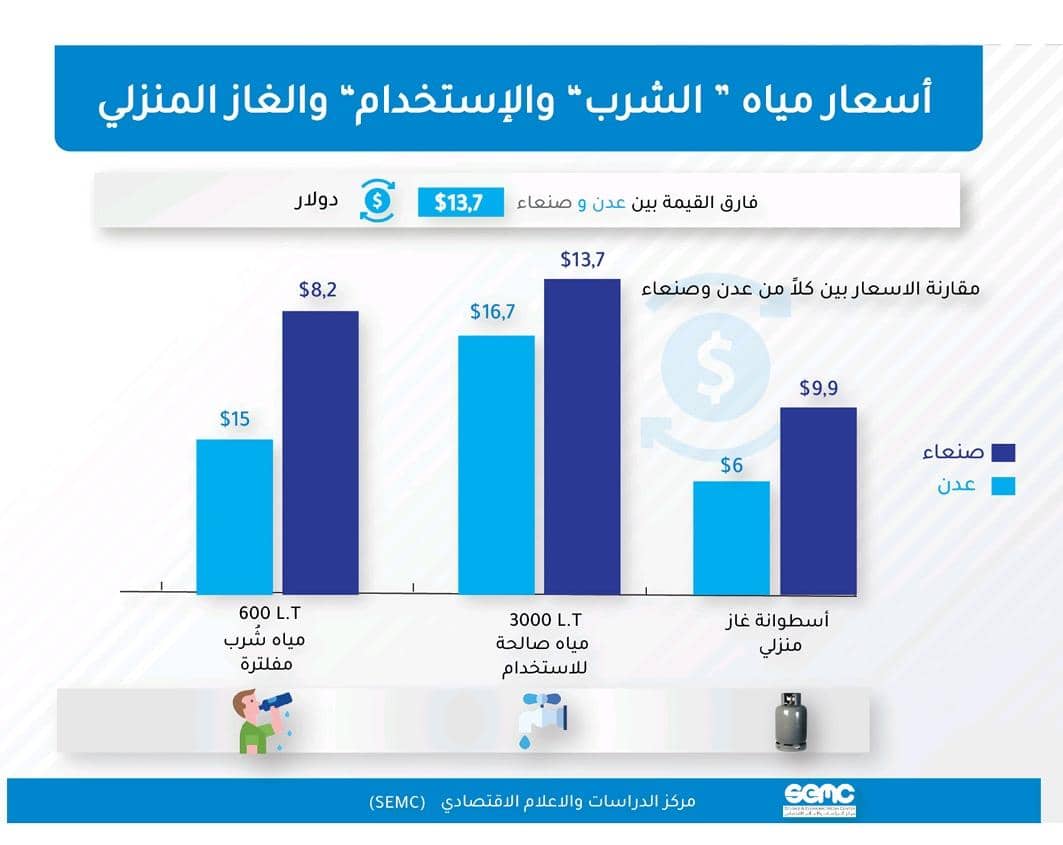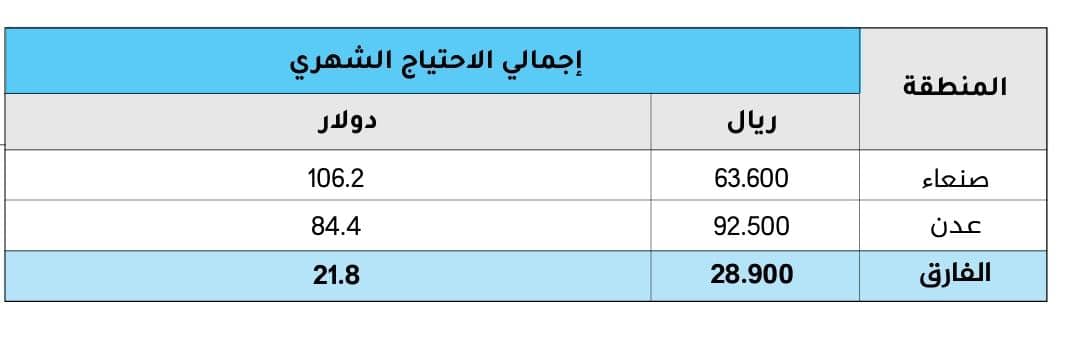Income shortfall and price hike.. An economic report exposes Sanaa's reality in front of Aden
English - Saturday 30 July 2022 الساعة 04:12 pm Sana'a, NewsYemen:
Sana'a, NewsYemen:
A recent economic report revealed the worsening situation in the Houthi group's areas of control compared to the Yemeni government's control areas in terms of price difference and income.
The report issued by the Center for Studies and Economic Media said that there is a large gap between the exchange rate of the riyal against the dollar and the prices of basic commodities in areas controlled by the Houthi group, and that this is reflected in the purchasing power and livelihood of citizens.
He explained that the prices of commodities appear to be cheap in the areas of the Houthi group in local value compared to their counterparts in the government areas, but he pointed out that the reality of the price after exchanging it into the dollar differs, so that it becomes clear that the price difference is in favor of the government-controlled areas.
According to the report, there is a price difference of $21.8 between the Houthi-controlled areas and the Yemeni government, for the monthly basic food basket. A family in Sana’a needs $106.2 a month to buy it, while a similar family in Aden needs $84.4.
The report confirmed the existence of a large income deficit for families in Houthi-controlled areas compared to government-controlled areas, as a result of the interruption in the payment of government sector employees’ salaries, and the sufficiency of half an irregular salary, in addition to the levies imposed outside the framework of the law and its impact on prices, as traders try to compensate for their losses by raising prices.
On the other hand, regular salaries cover a large part of meeting the living needs of people in areas under the control of the Yemeni government, as they guarantee a recovery in the movement of markets, the availability of cash flow, in addition to the lack of obstacles that prevent the regular delivery of humanitarian aid. Compared to the areas under the control of the Houthi group, which controls all the necessary steps to complete the monthly distribution process, according to the report.
The report pointed out that the work team explored the situation of two families, each consisting of five individuals, in Sanaa and Aden, comparing their living situation, regular government salary, and other sources of income that cover their needs during the four months from January to April 2022.
The family’s income in Sana’a was only 37,000 riyals, or about 61.7 dollars, while the family’s income in Aden was 360,000 riyals, or about 327 dollars, which shows that the deficit in the family’s livelihood in Sana’a reached 85% compared to 2% in areas controlled by the Yemeni government (Aden).
The report concludes by warning that the conflict in its current form is leading the country to famine as it continues to limit alternative sources of income, strike social support networks, and provide cover for practices outside the framework of official vessels.





